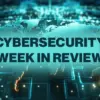

It’s no secret the cybersecurity landscape is shifting fast. Between the surge in AI adoption, rising demand for data sovereignty, and the political turbulence rattling global trust in U.S.-based tech, security leaders are being pulled in a dozen directions at once. We’re no longer navigating steady waters—we’re in a storm of change.
If there’s one thing I’ve learned covering this space, it’s that disruption isn’t just coming. It’s already here. And the question that matters now isn’t how to stop it—but how to prepare for what comes next.
From Roadblocks to Runways: The AI U-Turn
Not long ago, the knee-jerk response to generative AI in the workplace was to ban it outright. CISOs blocked tools like ChatGPT, fearing data leaks, compliance violations, or worse. But that wall cracked fast. Within months, organizations began walking back the bans and instead started asking a more productive question: How can we use this responsibly?
Kevin Simzer, chief operating officer at Trend Micro, shared a firsthand experience with me that emphasizes this shift. At a CISO roundtable just nine months ago, he polled the room—and every single participant was trying to block AI tools. Now? “We’re about to release some new research… and actually, 97% of them are leveraging AI,” Simzer said. The speed of that reversal underscores just how fast attitudes are changing.
The conversation today is about sanctioned AI tools, corporate guardrails, and strategies for safe deployment. You’ll hear a lot about fine-tuned models, private deployments, and internal copilots. What changed? Companies realized the competitive cost of saying “no.” If the tools can boost productivity, speed up decision-making, and automate grunt work, then blocking them just holds everyone back.
And as I’ve pointed out before, you can’t really ban AI use. You can try—but employees will just find workarounds. Shadow AI becomes the new shadow IT. The smart path forward is enabling responsible use, not pretending the genie can be stuffed back in the bottle.
Automation’s Hidden Price: What Happens to the Talent Pipeline?
Here’s the part we’re not talking about enough: while AI promises efficiency, it also threatens to hollow out the early-career ranks.
If entry-level developers are replaced by code-generating bots, who becomes tomorrow’s senior engineer? If AI filters out basic SOC alerts, where do future Tier 2 analysts come from?
Simzer echoed this concern with examples from Google’s own transformation. At a recent executive dinner hosted by Google, he heard firsthand that “25% of all code submitted into production in Q4 was AI-generated, and by the end of Q1 it was 30%.”
That’s not about replacing talent—it’s about accelerating innovation. But the question remains: What happens when the foundational learning experiences disappear?
It’s the classic “use it or lose it” problem. Much like how GPS made many of us forget how to read a map, AI could gradually erode the foundational skills that used to define the cyber talent ladder.
The Rise of Data Sovereignty
Meanwhile, a parallel shift is gaining momentum across the globe: data sovereignty. In short, countries and companies alike want more control over where their data lives and who can access it.
It’s not just about compliance anymore—it’s about national security and strategic independence. Across Europe, Asia, and the Middle East, organizations are rethinking whether they want sensitive data flowing through U.S. hyperscalers or stored in data centers subject to American jurisdiction.
Simzer noted a surge in customers explicitly asking that their “intellectual property, their crown jewel of data never leaves the country.” The demand for flexible deployment models—including on-prem solutions that can operate completely outside U.S. influence—is climbing sharply. And it’s no longer a fringe concern. It’s central to buying decisions in sectors where trust is paramount.
When Trust Wavers: The Global Fallout of U.S. Policy Chaos
Add in the growing mistrust in U.S. government policy—DOGE, export bans, trade disputes—and the picture gets even murkier.
The MITRE CVE funding scare earlier this year sent shockwaves through the security community. The idea that a foundational piece of vulnerability tracking infrastructure could vanish overnight because of political gamesmanship? That was a wake-up call. It raised bigger questions about who we can trust to maintain the digital infrastructure we all rely on.
Simzer referenced a recurring example that, while possibly apocryphal, speaks to real fears There were recent reports that the US government has some sort of “kill switch” capability for F-35 fighter jets sold to our allies. The implication? If the U.S. can remotely disable advanced hardware, what’s stopping them from flipping the off switch on your cloud applications?
These kinds of stories, real or not, are prompting countries to reassess their tech dependencies. Some are already investing in local infrastructure and pushing for regional cloud initiatives to reduce exposure to foreign policy swings.
Guardrails, Not Walls
So where does that leave cybersecurity leaders?
It leaves us in a moment of strategic reckoning. We can’t afford to say no to innovation. But we also can’t afford to ignore the risks. The answer isn’t fear or paralysis—it’s balance.
Organizations need to build systems that allow for AI adoption with transparency and oversight. They need infrastructure that can flex between cloud and on-prem to meet sovereignty and compliance needs. And they need to think long-term about the human skills that keep those systems safe and functioning.
The Road Ahead: Resilience by Design
If 2023 was about waking up to disruption, then 2025 is about adapting to it.
Resilience is no longer a buzzword—it’s a survival trait. That means being agile enough to pivot when policies shift. It means architecting flexibility into your tech stack. And it means keeping a firm grip on who controls your data, your workflows, and your destiny.
Cybersecurity has always been about anticipating threats. But now, it also has to be about anticipating change—and being ready for whatever comes next.



